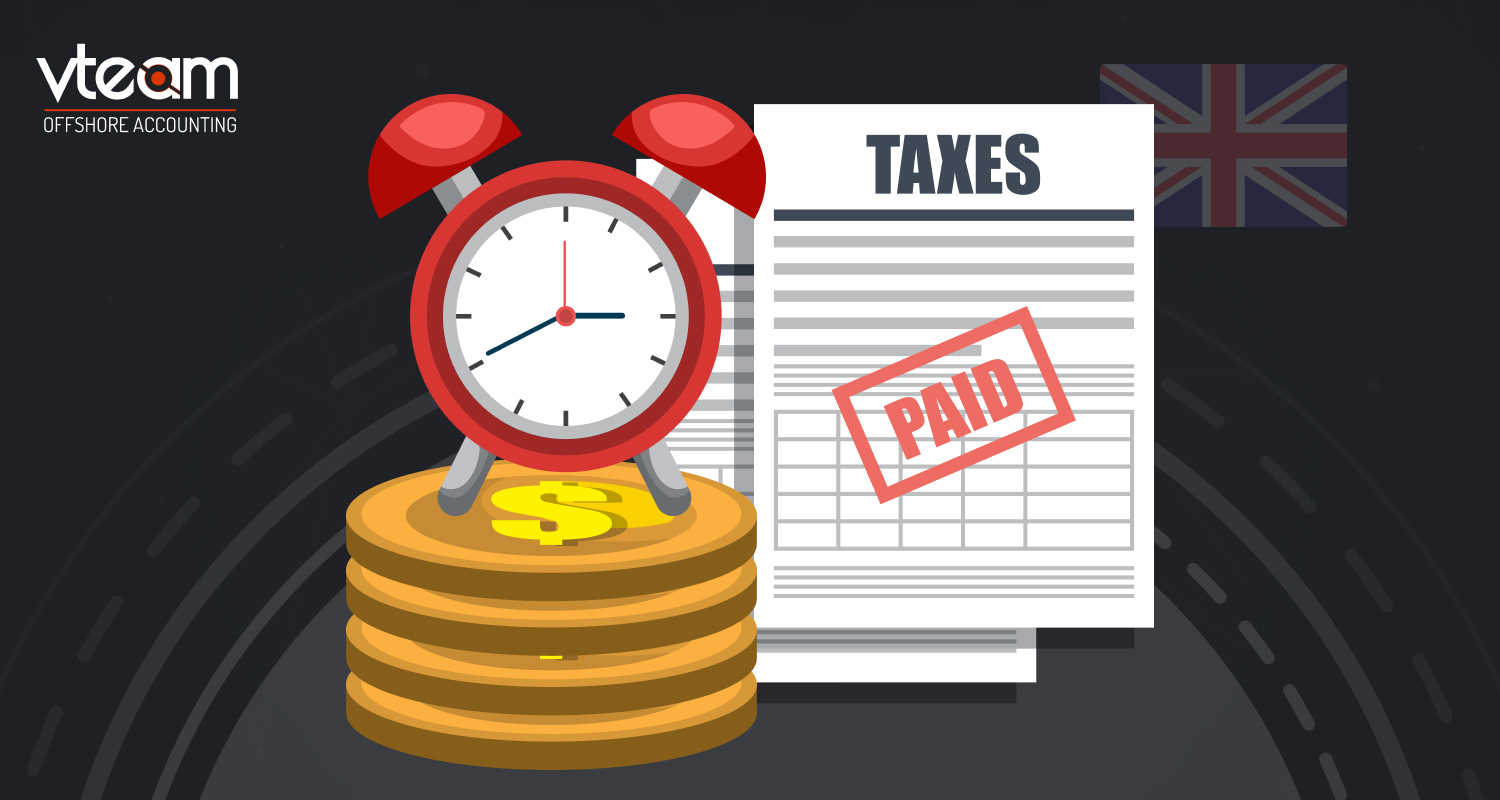Limited companies might need to pay a tax called Stamp Duty in some situations. This tax applies when shares in the company are transferred from one person to another.
There are two main types of Stamp Duty that can apply:
- Stamp Duty: This is charged at 5% if the shares are transferred on a paper form.
- Stamp Duty Reserve Tax (SDRT): This is also charged at 5% but applies if the shares are transferred electronically through a system called CREST.
It’s important to note that the amount of Stamp Duty you pay is based on the price you actually pay for the shares, not their real value.
This might be surprising because most people associate Stamp Duty with buying a house. But, it’s also a requirement when buying and selling shares in a limited company.
Stamp Duty when buying shares using a stock transfer form
Buying shares with a paper form? Here’s what you need to know about Stamp Duty:
If you’re buying shares in a limited company using a physical stock transfer form (called a J30 form), there are some things to keep in mind regarding Stamp Duty.
- Rounding Up: The Stamp Duty you owe is based on 5% of the purchase price, but it gets rounded up to the nearest £5. So, even if the exact calculation gives you a few cents, you’ll pay the next full £5 increment.
For example, if you buy shares for £2,250, the exact Stamp Duty would be 5% x £2,250 = £112.50. However, it gets rounded up to £15 which is what you’ll actually pay.
- Deadline for Payment and Submission: You have 30 days from the date the stock transfer form is signed to send a copy to HMRC (the tax authority) and pay the Stamp Duty.
There are several ways to pay: online banking (Faster Payment), Bacs (bank transfer), or CHAPS (high-value payment system). Missing the deadline can lead to penalties and interest charges. To prevent this situation, it is highly recommended to consult with a taxation outsourcing services provider.
- Proof of Payment: Once you’ve paid the Stamp Duty, you need to notify HMRC electronically. This notification should include:
- A reference number for your payment
- The amount you paid
- The date of payment
- An electronic copy (scanned PDF) of the signed and dated stock transfer form (or the relevant transfer document – instrument of transfer or Companies House form SH03)
If you can’t submit this information electronically, you can send it by mail to HMRC’s Stamp Office.
- Good News! No Stamp Duty for Small Transactions: Thankfully, there’s no Stamp Duty to pay on any share transfer transaction under £1,000, regardless of the actual value of the shares you’re acquiring.
Also Read : Stressed To The IRS? Self-Care Strategies For Conquering Tax Anxiety
Stamp Duty Reserve Tax (SDRT) when buying shares electronically
Buying shares electronically? Here’s the deal with SDRT:
If you’re buying shares electronically (no paper forms involved), you might encounter Stamp Duty Reserve Tax (SDRT) instead of regular Stamp Duty. It’s a different tax altogether. You can consult with tax consultation services for the same.
There are two ways you can buy shares electronically:
- Through CREST: This is a fancy system that keeps track of shares electronically. The good news is, if you buy shares through CREST, the SDRT (which is only 0.5%) is automatically calculated and paid to the taxman (HMRC) for you. No extra paperwork needed!
- Off-Market: This means buying shares outside of the CREST system. Here, things are a bit more manual. You’ll need to send a written notice to HMRC about the transaction within a specific timeframe. This notice should include details like:
- Who bought the shares and who sold them
- How many shares were transferred and what type they are
- How much you paid for the shares (or the value of anything else you used to pay instead of cash)
- A reference number you choose to help HMRC track things
The deadline for sending this notice and paying the SDRT depends on how you bought the shares:
* **Standard Deadline:** If you couldn’t have used CREST, the deadline is the 7th of the next month after the transfer.
* **Faster Deadline:** If you could have used CREST but didn’t, you only have 14 days from the trade date to send the notice and pay.
Finally, if you get shares for free (as a gift), you don’t have to worry about SDRT at all!
When do you pay tax on buying shares?
Here’s a breakdown of when you typically pay tax on buying shares:
Tax Applies:
- Buying existing shares in a UK company (transferring ownership from one person to another)
- Buying an option to buy shares (giving you the right to buy them later)
- Acquiring an interest in shares, like a share of the profits from selling them
- Buying shares in a foreign company with a UK share register
- Rights arising from shares, like voting rights when a company issues new shares
Tax Doesn’t Apply:
- Receiving shares as a gift (free)
- Buying newly issued shares in a company (directly from the company)
- Purchasing shares in open-ended investment companies (OEICs) or unit trusts from the fund manager
- Generally, buying foreign shares outside the UK (but you might pay tax on income from them)
Even if you don’t pay Stamp Duty or SDRT when buying foreign shares, you might still owe Income Tax on any profits you make from them. Additionally, when you sell your shares in the future, you might be liable for Capital Gains Tax (CGT). For more learning about Stamp Duty you can take help of tax accounting UK for help.
Selling Shares
No Tax on Selling:
Neither companies nor shareholders pay Stamp Duty or SDRT when selling or transferring shares. This applies to companies issuing new shares and shareholders selling or giving away existing ones.
Capital Gains Tax (CGT)
However, when you sell existing shares (not newly issued or gifts), you might have to pay Capital Gains Tax (CGT) on any profit you make. There are some exceptions, though:
- Shares held in an ISA or PEP (tax-advantaged savings accounts)
- Shares in an employer Share Incentive Plan (SIP)
- UK government bonds (gilts) including Premium Bonds
- Qualifying Corporate Bonds
- Employee shareholder shares (depending on when you received them)
Tax-Free Allowance:
Currently, there’s an annual Capital Gains Tax-free allowance of £6,000 (for the 2023-24 tax year). This means any profit you make up to that amount in a year is exempt from CGT.
Also Read : Clarifying Tax Changes For 2024: What You Need To Know
Buying Property as a Limited Company? Here’s the SDLT Scoop (England & Northern Ireland)
Thinking of buying land or property through your limited company? This guide will explain the Stamp Duty Land Tax (SDLT) provided by one of top tax solutions services providers you’ll need to pay in England or Northern Ireland (different rules apply in Scotland and Wales).
What is SDLT?
SDLT is a tax based on the purchase price of property. The more expensive the property, the higher the tax percentage you pay.
Important Note: This applies to both individuals and companies (like yours!).
Higher Rates for Residential Properties
If you’re buying a residential property (a house or flat for example), you’ll be subject to higher SDLT rates compared to non-residential properties. Here’s a breakdown of the rates as of September 23rd, 2022:
| Property Value | UK Company | Non-Resident Company |
| Up to £40,000 | 0% | 0% |
| Up to £250,000 | 3% | 5% |
| £250,001 – £925,000 | 8% | 10% |
| £925,001 – £1.5 million | 13% | 15% |
| Over £1.5 million | 15% | 17% |
Special 15% Rate for Limited Companies
There’s a catch! If you buy a residential property for more than £500,000, your company will likely pay a flat rate of 15% SDLT, unless it’s acting as a trustee.
There are also some surcharges on top of the base rates:
- 3% surcharge: Applies to residential properties over £40,000 for all companies.
- Non-resident surcharge: An extra 2% on top of the residential rates for companies not based in the UK.
Possible Relief from the 15% Rate
Thankfully, there are situations where your company might avoid the 15% rate and pay the lower rates instead. This applies if the property is:
- Used in a property rental business
- Purchased for development or resale
- Involved in making the dwelling available to the public (e.g., a hotel)
- Owned by a financial institution for lending purposes
- Occupied by company employees
- A farmhouse (currently or in the future)
- Bought by a qualifying housing cooperative
This is just a general overview. It’s always best to consult with an outsourcing tax preparation provider to understand the specifics of your situation and see if you qualify for any reliefs.
SDLT: What Properties Do Limited Companies Pay On? (England & Northern Ireland)
Thinking of buying property through your limited company? Here’s a breakdown of what Stamp Duty Land Tax (SDLT) applies to in England and Northern Ireland (different rules apply in Scotland and Wales).
What kind of properties trigger SDLT?
- Freehold property: You own the land and buildings outright.
- Leasehold property (new or existing): You’re renting the land and buildings for a set period.
- Shared ownership schemes: You partially own and partially rent a property.
SDLT also applies if you receive land or property in exchange for payment, like taking on a mortgage or buying a share in a house.
Limited companies and commercial property
Yes, companies still pay SDLT on commercial (non-residential) properties, including:
- Offices, shops, warehouses, factories, garages, workshops
- Land unsuitable for living (e.g., agricultural land)
- Forests and any other non-residential land
- Six or more residential properties bought at once
- “Mixed-use” properties (e.g., a flat above a shop)
SDLT rates for freehold commercial property:
- Up to £150,000: 0%
- £150,001 to £250,000: 2%
- Over £250,000: 5%
SDLT for new non-residential or mixed leasehold properties:
This is calculated differently and considers two things:
- Lease premium: The price you pay for the lease (uses the rates above).
- Net present value: The value of all the rent you’ll pay over the lease term. Rates are:
- Up to £150,000: 0%
- £150,001 to £5,000,000: 1%
- Over £5,000,000: 2%
These two SDLT amounts (lease premium and net present value) are added together to determine your total tax owed.
When and how to pay SDLT
If your property purchase goes above a certain price threshold, you need to:
- Submit an SDLT return to HMRC.
- Pay the SDLT owed within 14 days of the transaction date (typically the completion date).
This can be done through various methods like online banking, Bacs, CHAPS, debit/company credit card, or even by cheque. You’ll need a unique reference number (UTRN) to make the payment.
Seek professional advice
Stamp Duty Land Tax (SDLT) can be complex, especially for limited companies. That’s where Vteam comes in! Our team of tax experts can help you navigate the SDLT process and ensure you’re paying the correct amount. We can also advise you on potential reliefs and exemptions you may qualify for.
Contact Vteam today for a free consultation and learn how we can help you save money on your SDLT bill.

